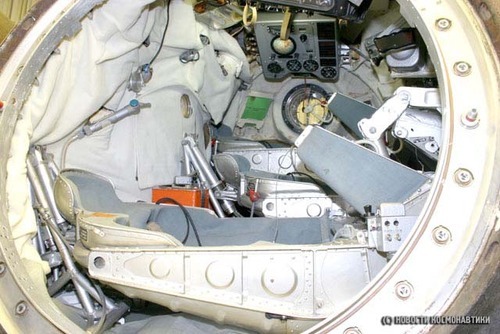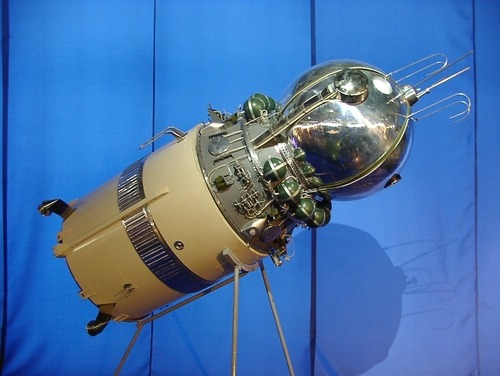In Early September Of 1666, The Great Fire Of London Devastated The City For Four Days. Archaeological
In early September of 1666, the Great Fire of London devastated the city for four days. Archaeological evidence suggests the searing heat may have reached as high as 3000 F. At that temperature human remains, bones and all, become ash.
More Posts from Stubborn-turtle-blog and Others
I dance the Waltz to look refined. I dance Salsa to look exotic. I dance the Tango to look sexy. I dance Blues to look sexual. I dance West Coast Swing to look smooth. And I dance Lindy Hop so I can stop worrying what I look like and just have fun bouncing and swirling like a deranged yo-yo.
If This Isn’t From a Book, It Should Be (via gaircyrch)
I’d argue that Westie looks like what ever you want it to be (I dance it because I love how free I feel)

Voskhod-the first multiple-manned mission
Although we now take for granted the long term success of the International Space Station, it wasn’t too long ago that we were totally earthbound. That changed on this day, October 12, 1964 when the Soviet Union launched the Voskhod 1 (Восхо́д), the first manned capsule to carry more than one person into space. The Voskhod program was a proof of concept program to test systems for more ambitious space exploration. The Voskhod program was notable for several firsts: the first multi-person mission to space (Cosmonauts Komarov, Yegorov and Feoktistov in the Voskhod 1) and the first space walk (Belyayev and Leonov in Voskhod 2). The Vostok and Voskhod programs provided the framework for what became the Soyuz program and ultimately the current ISS.

The Russian desire to ‘win’ the Space Race led to many dangerous compromises. The interior of the capsule (shown above) was so cramped that the cosmonauts would not have room for space suits, making the flight extremely dangerous in the event of depressurisation. To insure the engineers paid enough attention to this, head designer Sergei Korolev assigned the lead engineer to fly inside the capsule, therefore motivating him to design the safest capsule possible.

The Russian word Voskhod (Восхо́д) means sunrise and is a combination of the Russian words vos- (from vostok восток) meaning east and xodete (ходить) meaning go or rise.
The Indian Space Research Organisation (ISRO) just sent 20 satellites into orbit with one launch, marking the largest satellite launch in the space agency’s history.
Their previous record was 10 satellites delivered with one mission, and this latest accomplishment takes them a lot closer to the delivery rates of NASA and the Russian Federal Space Agency, solidifying India’s place in the global space market.
Out of the 20 satellites, 17 were commercial, so used by companies to help us do things like get better TV signals or weather forecasts. The main cargo, though, was the ISRO’s 725.5-kilogram (1,599-pound) Cartosat-2 - a satellite used for earth observation much like NASA’s Landsat program.
Continue Reading.
Space Station Science: Biological Research

Each month, we highlight a different research topic on the International Space Station. In August, our focus is biological research. Learning how spaceflight affects living organisms will help us understand potential health risks related to humans on long duration missions, including our journey to Mars.

Cells, microbes, animals and plants are affected by microgravity, and studying the processes involved in adaptation to spaceflight increases our fundamental understanding of biological processes on Earth. Results on Earth from biological research in space include the development of new medications, improved agriculture, advancements in tissue engineering and regeneration, and more.
Take a look at a few of the biological research experiments performed on space station:
Biomolecule Sequencer

Living organisms contain DNA, and sequencing DNA is a powerful way to understand how they respond to changing environments. The Biomolecule Sequencer experiment hopes to demonstrate (for the first time) that DNA sequencing is feasible in an orbiting spacecraft. Why? A space-based DNA sequencer could identify microbes, diagnose diseases and understand crew member health, and potentially help detect DNA- based life elsewhere in the solar system.
Ant-stronauts

Yes, ant-stronauts…as in ants in space. These types of studies provide insights into how ants answer collective search problems. Watching how the colony adapts as a unit in the quest for resources in extreme environments, like space, provides data that can be used to build algorithms with varied applications. Understanding how ants search in different conditions could have applications for robotics.
TAGES

The TAGES experiment (Transgenic Arabidopsis Gene Expression System) looks to see how microgravity impacts the growth of plant roots. Fluorescent markers placed on the plant’s genes allow scientists to study root development of Arabidopsis (a cress plant) grown on the space station. Evidence shows that directional light in microgravity skews root growth to the right, rather than straight down from the light source. Root growth patters on station mimic that of plants grown at at 45% degree angle on Earth. Space flight appears to slow the rate of the plant’s early growth as well.
Heart Cells

Spaceflight can cause a suite of negative health effects, which become more problematic as crew members stay in orbit for long periods of time. Effects of Microgravity on Stem Cell-Derived Cardiomycytes (Heart Cells) studies the human heart, specifically how heart muscle tissue contracts, grows and changes in microgravity. Understanding how heart muscle cells change in space improves efforts for studying disease, screening drugs and conducting cell replacement therapy for future space missions.
Medaka Fish

Chew on these results…Jaw bones of Japanese Medaka fish in microgravity show decreased mineral density and increased volume of osteoclasts, cells that break down bone tissue. Results from this study improve our understanding of the mechanisms behind bone density and organ tissue changes in space.
These experiments, and many others, emphasize the importance of biological research on the space station. Understanding the potential health effects for crew members in microgravity will help us develop preventatives and countermeasures.
Make sure to follow us on Tumblr for your regular dose of space: http://nasa.tumblr.com

Thousands of scientists in Germany, Peru and Taiwan are preparing for a new year without online access to journals from the Dutch publishing giant Elsevier. Contract negotiations in both Germany and Taiwan broke down in December, while Peru’s government has cut off funding for a licence.
“It’s very unpleasant,” says Horst Hippler, spokesperson for the DEAL consortium of state-funded universities and research organizations, which is overseeing negotiations in Germany. “But we just cannot accept what Elsevier has proposed so far.”
Continue Reading.
-
 thewhyldeone reblogged this · 6 years ago
thewhyldeone reblogged this · 6 years ago -
 thewhyldeone liked this · 6 years ago
thewhyldeone liked this · 6 years ago -
 bookbunny9 liked this · 6 years ago
bookbunny9 liked this · 6 years ago -
 very-into-being-alone-blog reblogged this · 8 years ago
very-into-being-alone-blog reblogged this · 8 years ago -
 ya-basic99 liked this · 8 years ago
ya-basic99 liked this · 8 years ago -
 calculustics liked this · 8 years ago
calculustics liked this · 8 years ago -
 brokentowels liked this · 8 years ago
brokentowels liked this · 8 years ago -
 harry-potter-can-knit liked this · 8 years ago
harry-potter-can-knit liked this · 8 years ago -
 alloutofgoddesses liked this · 8 years ago
alloutofgoddesses liked this · 8 years ago -
 f-man- liked this · 8 years ago
f-man- liked this · 8 years ago -
 panikken liked this · 8 years ago
panikken liked this · 8 years ago -
 tigerb103 liked this · 8 years ago
tigerb103 liked this · 8 years ago -
 tigerb103 reblogged this · 8 years ago
tigerb103 reblogged this · 8 years ago -
 notsincetheincident reblogged this · 8 years ago
notsincetheincident reblogged this · 8 years ago -
 idekman-fuggit reblogged this · 8 years ago
idekman-fuggit reblogged this · 8 years ago -
 ubiquitousdevil reblogged this · 8 years ago
ubiquitousdevil reblogged this · 8 years ago -
 herinternetdaze liked this · 8 years ago
herinternetdaze liked this · 8 years ago -
 coolreference reblogged this · 8 years ago
coolreference reblogged this · 8 years ago -
 runhan666 liked this · 8 years ago
runhan666 liked this · 8 years ago -
 kambo-g liked this · 8 years ago
kambo-g liked this · 8 years ago -
 idonotliketheconeofshamesblog liked this · 8 years ago
idonotliketheconeofshamesblog liked this · 8 years ago -
 lostrosegarden liked this · 8 years ago
lostrosegarden liked this · 8 years ago -
 myrmiqons liked this · 8 years ago
myrmiqons liked this · 8 years ago -
 apricitie-blog1 reblogged this · 8 years ago
apricitie-blog1 reblogged this · 8 years ago -
 limes-brittanicus reblogged this · 8 years ago
limes-brittanicus reblogged this · 8 years ago -
 shyrazsaidi-blog1 liked this · 8 years ago
shyrazsaidi-blog1 liked this · 8 years ago -
 wildewonderlands-blog liked this · 8 years ago
wildewonderlands-blog liked this · 8 years ago -
 sayruq liked this · 8 years ago
sayruq liked this · 8 years ago -
 theprimeofmissvemm liked this · 8 years ago
theprimeofmissvemm liked this · 8 years ago -
 theexperienceband liked this · 8 years ago
theexperienceband liked this · 8 years ago -
 wabbitseason liked this · 8 years ago
wabbitseason liked this · 8 years ago -
 bjtc liked this · 8 years ago
bjtc liked this · 8 years ago -
 thatsjustmeandnobodyelse liked this · 8 years ago
thatsjustmeandnobodyelse liked this · 8 years ago -
 anarcoescritor-blog liked this · 8 years ago
anarcoescritor-blog liked this · 8 years ago -
 elilim liked this · 8 years ago
elilim liked this · 8 years ago -
 be-bopbaby reblogged this · 8 years ago
be-bopbaby reblogged this · 8 years ago -
 fgulla liked this · 8 years ago
fgulla liked this · 8 years ago -
 janedoeyedgirl liked this · 8 years ago
janedoeyedgirl liked this · 8 years ago
Gaming, Science, History, Feminism, and all other manners of geekery. Also a lot of dance
243 posts



